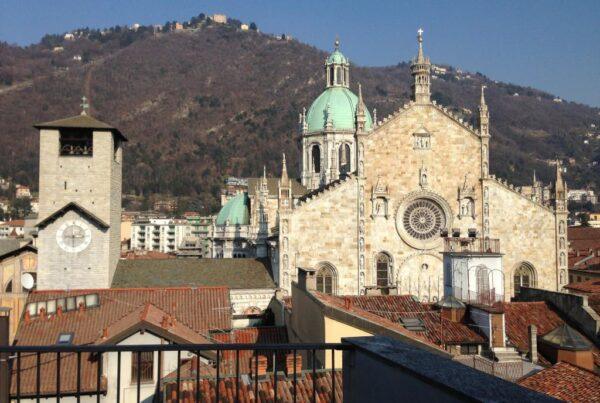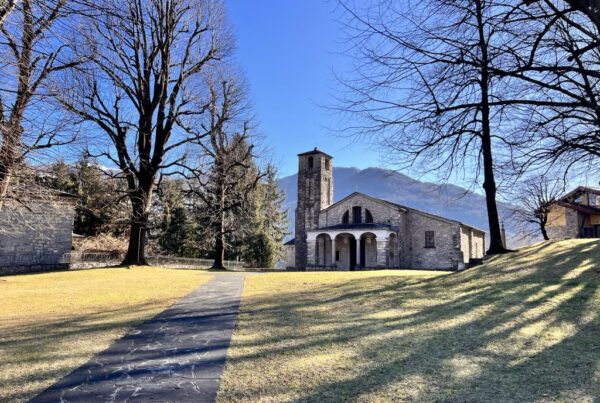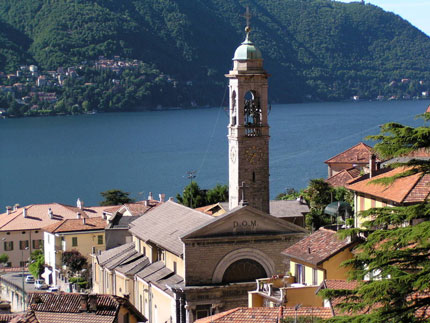Gravedona is one of the most significant and charming towns in the northern part of Lake Como, located in a picturesque inlet at the mouth of the Valle del Liro, directly facing the Piona Peninsula and dominated by the imposing Monte Legnone. This enchanting town has preserved its historic urban layout, which is divided into three distinct areas: the church district, the lakeside promenade, and the old castle area.
A Timeless Lakeside Setting
Nestled in a scenic bay, Gravedona boasts one of the most stunning lakeside promenades in the entire Lake Como region. This long and elegant waterfront path offers breathtaking views of the lake and surrounding mountains, making it a favorite spot for leisurely walks and sunset strolls.
The town also provides excellent athletic facilities and a convenient pedestrian and bicycle path that stretches all the way to the nearby town of Dongo, perfect for those seeking active exploration.
A Town Steeped in History and Art
Gravedona is rich in historical and artistic heritage, with evidence of its past dating back to pre-Roman times. Archaeological discoveries in the upper part of the town reveal remnants of ancient settlements, where sheer cliffs rise dramatically above the lake, once home to medieval fortifications and a castle, from which the town takes its name.
The lower inhabited area along the lake is adorned with antique facades and historical portals, offering glimpses into the architectural styles of bygone eras.
During the medieval period, Gravedona played a crucial role in regional politics. It actively participated in the Ten-Year War (1118–1127) between Como and Milan and was later part of the Treaty of Constance, which ended the conflict between Frederick Barbarossa and the Lombard League.
In the 16th century, Philip II of Spain ceded Gravedona to Cardinal Tolomeo Gallio of Como, marking a new chapter in the town’s history. Historically, Gravedona’s economy thrived on fishing, agriculture, and seasonal tourism, with visitors flocking to its shores during the warmer months.
The Scenic Hills of Peglio and Livo
Just 6 kilometers from Gravedona, perched on a panoramic hillside, lies the small village of Peglio. Renowned for its breathtaking views of the lake, Peglio is home to a 16th-century church that houses frescoes by Il Fiammenghino, a renowned Lombard painter.
Continuing from Peglio, visitors reach the charming village of Livo, a gateway to an unforgettable hike leading to Rifugio Como (1,790 m), nestled on the serene shores of Lake Darengo. This hike is an unmissable experience for lovers of nature and adventure.
Places to Visit in Gravedona
The Church of San Vincenzo
Dating back to around 1050, this church was built on the site of an earlier 5th-century votive chapel. It underwent reconstruction between the 17th and 18th centuries, but its crypt and two inscriptions from the 6th century remain intact. The church represents a significant architectural and historical landmark in the region.
The Church of Santa Maria del Tiglio
This Romanesque masterpiece, constructed in black and white marble, dates back to the 12th century and stands as one of Lake Como’s most iconic churches.
•The Bell Tower: Integrated into the center of the facade, it features elegant mullioned windows with two and three lights from the 18th century.
•Exterior Decoration: The structure is crowned with a cornice of small arches under the eaves, with semi-circular apses decorated with saw-toothed friezes and separated by slender semi-columns with pilaster strips.
•Interior: The single nave boasts pointed arches, a walled-in Romanesque altar, and remnants of 5th-century mosaics on the floor.
•Baptismal Font: The font has replaced the earlier baptistery of Saint John the Baptist.
•Artistic Heritage: Inside, visitors can admire a Romanesque wooden crucifix and a series of frescoes from the 13th to the 16th centuries.
A Blend of History, Nature, and Authenticity
Gravedona is not just a tourist destination but a living testament to Lake Como’s rich cultural heritage. Whether you’re strolling along the lakeside promenade, exploring centuries-old churches, or hiking in the nearby hills, every corner of Gravedona offers a story waiting to be discovered.
Come and experience Gravedona—a place where history, art, and natural beauty converge to create an unforgettable experience on the shores of Lake Como.





